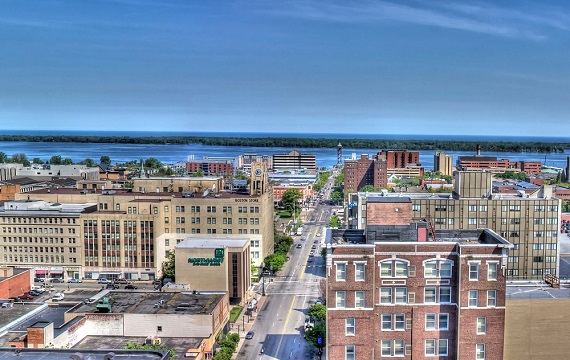Why Erie’s Downtown is a Proxy for the Nation
The Future of Main Street Businesses amidst the COVID-19 Crisis
By Ben Speggen and Bruce Katz
March 24, 2020

Download Why Erie's Downtown is a Proxy for the Nation: The Future of Main Street Businesses Amidst the Covid-19 Crisis
The challenge of how to keep local economies from cratering in the COVID-19 crisis is evolving - we don't know when the pandemic will abate and what the state of our cities will be when it does. The story of Erie presented here is a microcosm of the challenges many cities are facing across the nation. It shows how a community writ large – and a group of remarkable, passionate entrepreneurs, and city builders – have been able to restore a sense of civic pride and purpose and put a city back on track, and how that years-long effort is at risk of reversal in a matter of weeks.
As federal emergency responses move to ground, we have a simple test that we will apply for the nation. Do these measures work for thousands of downtowns and main streets like Erie? Do they respond to the real-world calculations of small business owners? And do they ultimately harness the collective power and capacity of communities both to mitigate the damage and drive the future?
As much as any other metropolis or community, Erie is a proxy for rebuilding the nation in the aftermath of this crisis. In cities like Erie, networks of founders, landlords, lenders, utilities, business chambers, customers, local cheerleaders, city governments, economic development intermediaries, and more form the basis of a “Cheers Economy” where “everyone knows your name.” It also provides the foundation for locals helping locals and social glue for the community, the first line of defense before large federal resources begin to flow. As we see in Erie, this intricate web of relationships surrounds even the smallest Main Street business and the math of revenues and expenses in a small city where relationships are key is not a rigid formula, particularly as landlords are small businesses themselves. Unfortunately, as Erie demonstrates, the crisis has already moved past stabilizing solutions: many small-business owners have already laid off almost all their employees and are wary of taking on excessive debt given the uncertainty.
We believe stories like Erie's and other local responses telegraph our path to recovery. On one level, a fast recovery in the long term (when the health crisis abates) is dependent on the nature and scale of the short-term response. The longer we can keep small businesses alive and workers employed, the quicker the recovery and rebound will be. Erie is a microcosm of the small cities throughout the country. If we can keep businesses alive, then the bounce back will be rapid and pronounced. If businesses collapse, then the recovery will be slow and painful.
On another level, the recovery will depend upon the kind of bottom up responses and collaborative action that is a hallmark of Erie and many other communities. In our view, this crisis is too complex and multi-dimensional to be left to policymakers sitting in our remote national capitol. Rather, local networks of public, business, civic, university, and other leaders need to band together – now – to prepare their communities for what comes next and be a constant feedback loop for national and state governments.
Download Why Erie's Downtown is a Proxy for the Nation: The Future of Main Street Businesses Amidst the Covid-19 Crisis
This report was produced through the collaboration of Drexel's Nowak Metro Finance Lab and Accelerator for America.